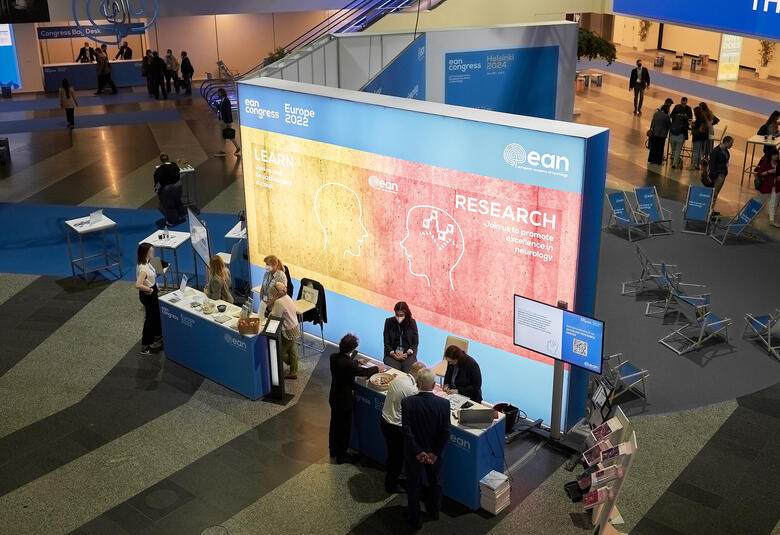In a focused workshop at #EAN2021, three speakers addressed migraine diagnosis in the era of precision medicine. Dr Raquel Gil-Gouveia, Hospital da Luz, Lisbon, Portugal, highlighted that despite ICHD-3 diagnostic criteria, migraine remains both underdiagnosed and misdiagnosed. The causes of migraine are likely a mix of genetic, epigenetic, and environmental factors, and Dr Nadine Pelzer, Leiden University Medical Center, Netherlands, reviewed recent studies that identify genetic risk loci and polygenic risk factors. Lastly, Dr Pablo Irimia Sieira, University of Navarra, Spain, summarized research into biomarkers which in future could improve diagnostic, prognostic, and predictive abilities for migraine.
Refining migraine diagnosis
Dr Raquel Gil-Gouveia explained that while well-accepted ICHD-3 diagnostic criteria exist for migraine,1 it is still a complex disorder that remains both underdiagnosed and misdiagnosed.2 Migraine diagnosis remains somewhat subjective as there is no definitive diagnostic test for migraine, rather the diagnosis is made by identifying a pattern of recurring headaches along with associated symptoms.
Migraine is a complex disorder that remains both underdiagnosed and misdiagnosed
Dr Gil-Gouveia considered that beyond diagnosis, knowledge of the symptoms, signs and sequence of the migraine syndrome, and an understanding of the mechanisms of disease will help physicians to predict treatment response, determine prognosis and provide personalized medicine.
Genetic identifiers of migraine
The causes of migraine are likely a mix of genetic, epigenetic, and environmental factors that, together with the individual’s life history, translate into the observed clinical heterogeneity.2 Dr Nadine Pelzer discussed genome-wide association studies (GWAS) that can help to identify polygenic risk scores. High polygenic risk score is associated with a strong family history of migraine, low age of onset, migraine with aura, and efficacy of migraine-specific drugs.3-5
GWAS of 102,084 migraine cases has identified 123 loci of which 86 are novel and include genes encoding recent migraine-specific drug targets, namely calcitonin gene-related peptide (CGRP) (CALCA/CALCB) and serotonin 1F receptor (HTR1F).6
Dr Pelzer determined that while heritability explained by GWAS loci continues to increase, no role yet exists for determination of GWAS/polygenic risk scores in the clinical diagnosis of migraine. Nonetheless, GWAS may aid in identifying pathophysiologic pathways and potential drug targets.
Genome-wide association studies may help identify migraine pathophysiologic pathways and potential drug targets
Biomarkers for migraine diagnosis
Dr Pablo Irimia considered that biomarkers have potential application to many areas of migraine including diagnosis, defining pathophysiology and identifying new targets, personalized therapy, and as a marker of treatment response in clinical trials.1 A diagnostic biomarker is used to detect or confirm the presence of disease, which would help to reduce the subjective nature of migraine diagnosis.2
Identification of a diagnostic biomarker would help to reduce the subjective nature of migraine diagnosis
During a migraine attack, activation of the trigeminal vascular system leads to release of neuroinflammatory mediators which trigger the underlying processes associated with migraine.7,8 Neurotransmitters and neuropeptides that may play a role in migraine include serotonin, CGRP, amylin, substance P, glutamate, vasoactive intestinal peptide (VIP) and pituitary adenylate cyclase-activating polypeptide (PACAP).8-11 Of these, the evidence is strongest for CGRP;12 however, amylin and CGRP are structurally related peptides and amylin may play a causative role in migraine.11
Dr Irimia summarized that there are currently no accepted biomarkers for migraine, and while several potential biomarkers have been identified, biomarkers need to be measured by reliable methods to be replicable. A single marker may not capture the variability of patients with migraine, but rather in future a panel of different biomarkers for the diagnosis of migraine is likely.
A panel of different biomarkers for the diagnosis of migraine will likely be needed in future
Our correspondent’s highlights from the symposium are meant as a fair representation of the scientific content presented. The views and opinions expressed on this page do not necessarily reflect those of Lundbeck.




